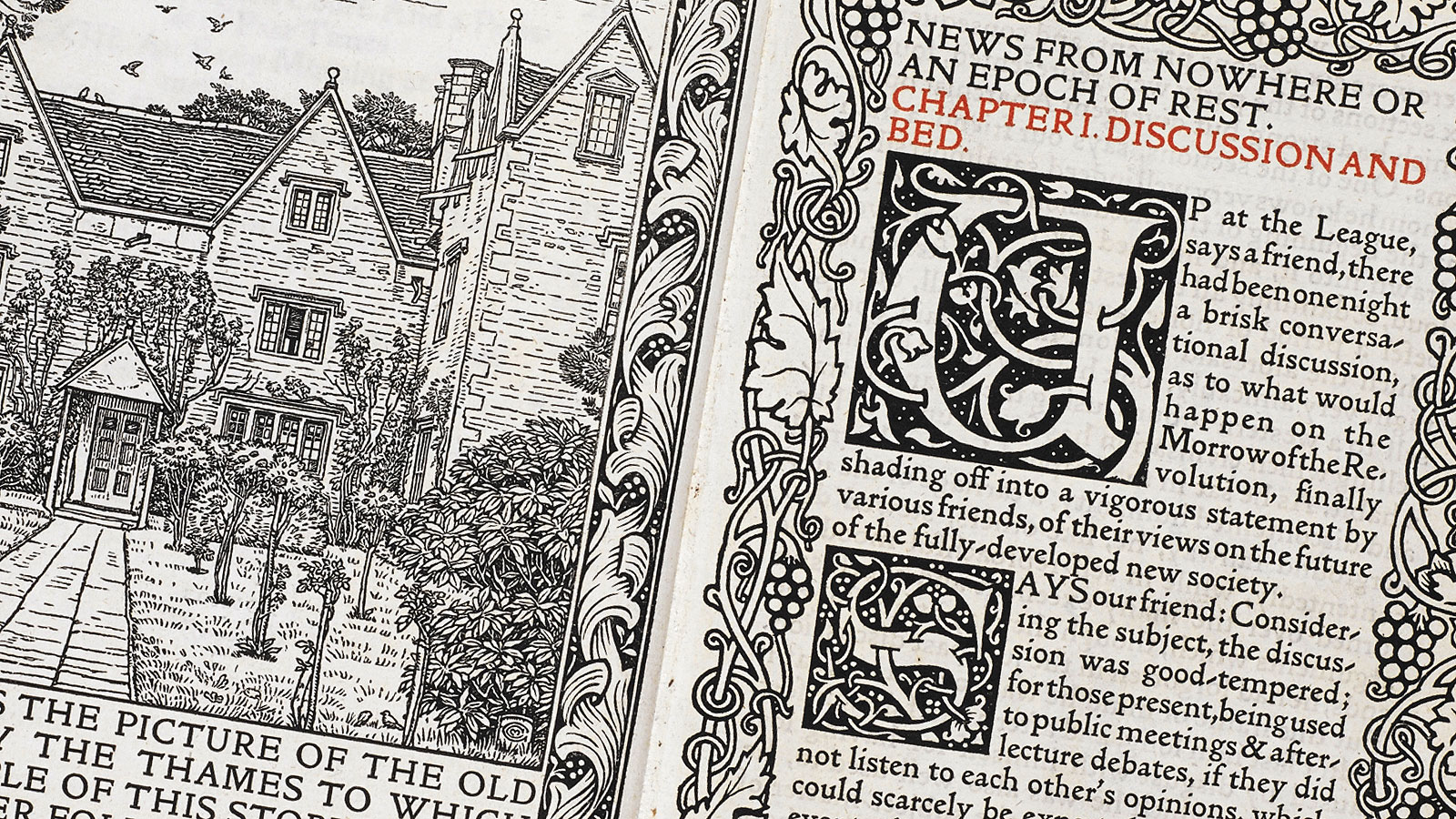Background
William Morris was viewed by his contemporaries as mainly a poet, however, he was involved in many other studies and activities, including romance-writing, pattern-designing, and activism. In particular, helped to found the Socialist League and spent much of his life working as an activist against consumerism and in support of protecting the environment and ancient buildings. Morris initially believed that the socialist revolution could happen peacefully, however, after being arrested twice while campaigning for free speech and the Bloody Sunday at Trafalgar Square in 1887 where the police attacked the crowd of socialist demonstrators without provocation, Morris began to believe that it must be done through violent means. It was during this time that he wrote News From Nowhere, which features an account of a violent socialist uprising.
Plot Summary
The narrator tells the reader that he heard a story from a friend at the Socialist League in (19th century) England. In order to relay the story properly to the reader, he states that he will tell it in first person. The story is then told by William Guest who goes to sleep in late-19th century London and wakes up in the same location in the 21st century. He meets Dick Hammond, who guides him through the new London, which now has no private property and no money. Dick takes Guest up Thames in order to help with the harvest. They stop to meet Old Hammond, Dick’s great-great-grandfather, who is a historian deeply interested in Victorian history. Old Hammond answers many of Guest’s questions and tells him of the great revolution that caused the change from capitalist to socialist society. While meeting Old Hammond, the reader is also introduced to Clara, Dick’s past lover and current love interest. Ellen, Guest’s love interest, is later introduced. After a few days of travel, Guest, Dick, Ellen, and Clara arrive at the harvest site. Guest reveals to Ellen where (and when) he is really from. They all take part in a festive dinner, but suddenly, the other characters can’t see Guest anymore. He walks away into a black fog and wakes up back in the 19th century. Guest believes that this was a vision of the future rather than a dream.
Notes & Quotes
- The Thames River is depicted here in a very different manner from its portrait in Dickens’s Our Mutual Friend and Sir Conan Doyle’s The Sign of Four, which view the river as a site of death and crime. Here, the Thames is characterized by life and purity through its clear water and salmon population which London residents happily fish and eat (46-8). It is only after his “bewilderment” at the clean state of the Thames that Guest recognizes the cleanliness characterizing all of 21st-century London: “The soap-works with their smoke-vomiting chimneys were gone; the engineer’s works gone; the lead-works gone; and no sound of riveting and hammering came down the west wind from Thorneycroft’s…showed no marks of the grimy sootiness which I was used to on every London building more than a year old” (48).
- Based on Old Hammond’s answers and explanations, capitalism was the root of most of the 19th century’s problems. For example, crime no longer exists because (1) there is no envy for another’s property or wealth, and (2) women are not viewed as property as they once were (113).
- Old Hammond’s discussion with Guest also reveals that the socialist utopia of the feature has a new understanding of and appreciation for types of labor that were not respected during the 19th century. For example, Old Hammond laughs at Guest’s view of “…housekeeping an unimportant occupation, not deserving of respect” (94). In this utopia, labor that creates (builders, designers, farmers, etc.) and labor that creates happiness (domestic labor) are valued more than the intellectual labors that were once valuable in the 19th century.
